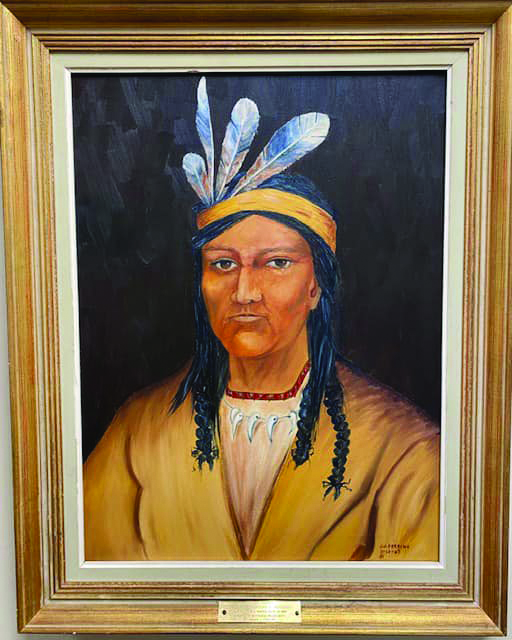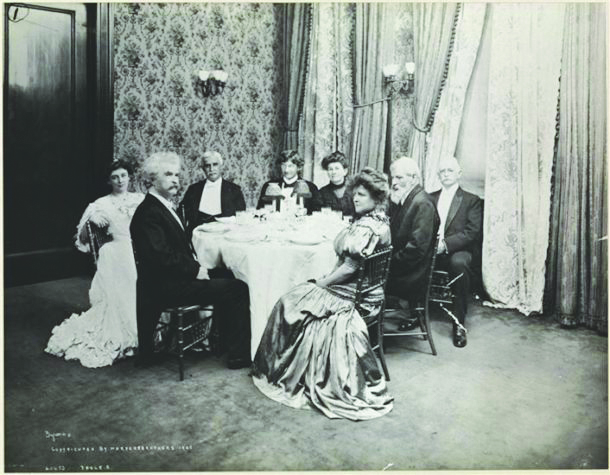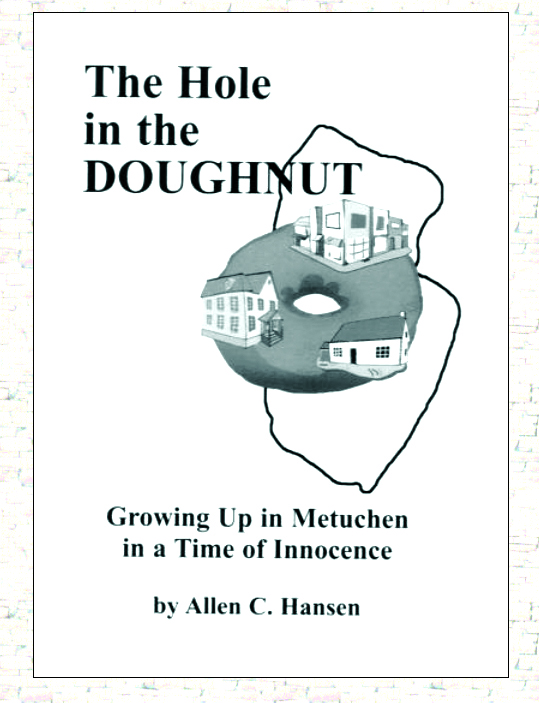A Lenni-Lenape chief, a Brainy Borough, and a hole in the doughnut
By Ryan Gallagher
Many have wondered about life outside modern-day New Jersey. If time travel were an option, what would this town look like 100 or 200 years in the past? Who lived there, and why?
Daily, it’s easy to neglect these thoughts to past civilizations and communities. However, much like the entire Garden state, Metuchen has a long, uncertain background that dates back farther than modern humans fully understand. Some of the most recent history recorded has to do with a mysterious Native American chief, and a community full of intellectuals—amongst Metuchen’s changing landscape. Most humans tend to forget history and (willingly or unwillingly) lose true historical facts. Luckily, Metuchen’s community includes those who seem hell bent on finding answers and preserving the past.
The American Indian Chief
Conversation buzzed about this topic when the Metuchen Police Department’s illustration of the Lenni-Lenape Chief on the department’s uniform patches and police cruisers came into question, according to CentralJersey.com.
Current Mayor Jonathan Busch said the former Police Chief Joseph Perrino was lent what some historians believe was an original life sketch of the Lenni-Lenape Indian Chief from 1693.

PHOTOS COURTESY OF TYREEN REUTER
“[Chief] Perrino took a picture of the sketch with the department camera and created the painting we have all seen,” the Mayor said, adding Perrino was creating a painting from a life sketch. “The original [painting] hangs in the office of the police chief and a copy can be seen at the [Metuchen Public] library.”
For years, there have been recordings and illustrations that depict a notable Native American Chief who was well known in the modern-day Metuchen-Edison region. It is thought that this person was called Chief Metuchen, or Matouchin, among various spellings or misspellings over recorded history.
“I have done a little looking into it,” said Nancy Zerbe, the chair of Metuchen’s Historic Preservation Committee. Zerbe got a degree in history and studied historic preservation at Columbia for her graduate degree. She spent 14 years with the New Jersey State Historic Preservation office, she’s been a consultant in this capacity, and been active in local historic preservation efforts since. Even still, she was hesitant when I called her an expert on this specific subject matter.
“So, it’s still a real mystery. I went back and looked at old issues of the Metuchen Recorder. Old papers were cautious to say this. I believe we were named after a chief in this area. But I am skeptical still, even more so about the 1968 illustration from the original sketch by Percy Milligan in the 1690s. Published in 1900, on the 60th anniversary of the Recorder the caption says, Legendary Chief Matouchin—this is probably what he’d look like. So, the publicity about it was hypothetical.”
On the other hand, there is a written letter preserved from 1720 that refers to this Indian Chief. One woman has read and studied this old letter.
“The excerpt is from a letter written by John Ayers to his mother in London, dated ‘Ye tenth of October, 1720,’” said Tyreen Reuter, who is a Metuchen resident, historian, and volunteer for the Metuchen Historical Society. “In the letter, he first describes his voyage and fellow travelers, then the land in which he settled.”
MeTochen is a faire and healthy spotte about two leagues from ye bay of Perth Amboy where we landed from our ship. Heare be many little hilles which go uppe and down like ye wartes on a toades backe.
Heare also be many fine trees of oake and a kind of nutte which is in a podde or huske with many sharp spines. Ye Indians calle them “dampsh arps” which in their tounge means “needle-nutt.
MeTochen is called from ye name of ye chief of this place and meanth “slowe-dog” for that chief is lame and goeth slowly. Ye land heare is redde like a foxe and yt is wet yt sticketh lustily.
The letter is seemingly conclusive—there was a Chief that Metuchen, New Jersey is named after. Or is it? Those who study history qualify this artifact from the past, since the letter was personal and never meant to be published. Plus, there is no way to verify the “slow dog” translation, Reuter conceded.
While being slightly skeptical Reuter shared that, “I think the important part about the letter: ‘They call this location from the chief.’ So, nothing points to disavow it. I haven’t found anything to negate that this wasn’t a picture of an Indian chief. I believe he was an actual person, and John Ayers was aware of him in 1720. So, he was real. I can’t say what his name meant. But Native Americans are still here today, and not entirely gone.”
The Brainy Borough Blossoms
As American history marched on, the town of Metuchen was established, and more notable figures moved in. Both the Historical Society (Reuter and crew) as well as the Historic Preservation Committee (Zerbe and her fellowship) continuously work to educate and remind people about the unique Metuchen community.

PHOTO COURTESY OF NANCY ZERBE
The Historic Preservation Committee specifically looked at past Metuchen residents’ dwellings and hangouts to preserve buildings and districts in town. As it happens, many intellectuals flocked to Metuchen during early American history—earning the name Brainy Borough.
“We found an impressive list of people who lived in this town. We haven’t stopped being brainy, but looking back the list is impressive. The nickname first appeared in the early 20th century. In 1914, there was this little humor of it in local papers—an editor at the Metuchen Recorder and his counterpart in Glen Ridge. They’d put one accomplished person from their town in the paper. While the other town would highlight another ‘brainy’ person in competition,” explained Zerbe.
Clubs and organizations were created out of the “brainy” individuals’ interest and drive to fraternize with the increasingly high-brow community. In the late 1800s, Metuchen was home to the Young Men’s Literary Society, Quiet Hour (a literary, social, and feministic discussion), the Metuchen Book Club, the Delphic Dramatic Association, the Chautauqua Literary Circle, among others, according to Metuchen: The Brainy Borough by the Metuchen Historic Preservation Committee.
“After some research, we got a grant to put together a little booklet. Committee members as well as volunteers like Reuter from the Historical Society transcribed and put the info together. We used the grant money to print copies,” recalled Zerbe.
Reuter described an intelligent, “avant-garde” group of writers, artists, educators, activists, and others who flocked to Metuchen-Edison region in the late 1800s and early 1900s.
“Very notable was Mary Wilkins Freeman—who moved into Metuchen in 1902. She had married a local man and was visiting writers in the area—like Henry Mills Alden,” Reuter noted.
Much like today, Metuchen was a central location for bankers, engineers, editors, innovators, and businessmen to live and travel between New York City, Jersey City, Newark, Trenton, and Philadelphia.
While Metuchen’s newspaper competition with Glen Ridge made this an official debate, there is a paper trail which mentions Metuchen as the brainy borough beforehand too.
“People started to refer to the brainy borough because of the people here. People like Gustav Lindenthal and Lewis Nixon—even Mark Twain would come out and visit Henry Mills Alden,” said Reuter. “Quotes from a newspaper in 1908 read, ‘For brains you can’t beat Metuchen.’”
The intellectual revolution inside Metuchen also had a large female influence, included Reuter. In that same 1908 article, the writer remarks on the presence of “Lots of clever women too,” as the list of over 24 Metuchen residents was nearly half female artists and writers.
The Hole in the Doughnut
Over the years, much has changed. Most notably, the geographical evolution of Metuchen has squeezed the town into Edison, New Jersey. As a result, the modern name for Metuchen has shifted to the “hole” inside the greater “doughnut” of Edison.

“You can’t leave Metuchen without going through Edison,” explained Reuter.
Many of the “brainy” individuals who once claimed Metuchen as their home lived in modern-day Edison. So now, what’s left?
Luckily for current citizens, modern historians and lovers of Metuchen are putting in hours to preserve Metuchen’s past and educate current residents about the place they call home.
“We’re trying to promote that Metuchen has an important history, and buildings here have value,” explained Zerbe. “Large lots get bought up and knocked down for big houses. But towns can have ordinances to protect private property—in compliance with municipal land use law, you must have historic preservation element in the master plan. Metuchen never had this until we got a small grant and I worked with Chris Cosenza, the borough planner. He and I co-authored a historic preservation element in 2021. Now, more people are aware of preservation and loss of historic buildings. And lots of this work has been done on volunteer effort—not just when we receive grants.”
The town’s important people in prominent positions seem to be stepping up to preserve history. Zerbe and her team continue to fight so that historic buildings and districts aren’t knocked down to build new houses, apartments, commercial buildings, or condominiums.
On the other hand, efforts from organizations like the police department are hard to ignore when the police badge now displays a Native American figure. Plus, Reuter and the Historical Society continue to work—in some cases literally uncovering brand new information from Metuchen’s past, buried underground.
“The borough has supported us while working at the Colonial Cemetery which dates before the American Revolution. Our study utilized ground-penetrating radar to find unmarked graves. In the past, there were no records of local natives and slaves who were buried. And we uncovered a lot more than we thought,” said Reuter.
Reuter plans to present her report to the mayor to recognize this site as well as to gather never-before-known information about the Metuchen inside a still-unsure American history. Moving forward, it’s not clear if Metuchen is still a haven for the brainy. What’s more, it’s hard to say that the town is much more connected to Native American history aside from one police patch. However, it does seem that Metuchen and its residents have and will continue to try to better the town and the community.
“This place has been known for non-profit and activist groups, as well as charities that provide civic engagement,” said Reuter. “Metuchen prides itself on being inclusive and helpful. There are lots of volunteers and people willing to lift a hand to offer a sense of community.”

